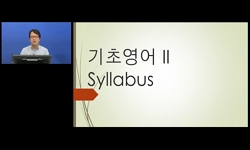The text was carried out by observing the structure of the relationship between each component of the syntax in the framework of the spatial structure and scheming the process of movement that appeared between the components through mathematical diagr...
http://chineseinput.net/에서 pinyin(병음)방식으로 중국어를 변환할 수 있습니다.
변환된 중국어를 복사하여 사용하시면 됩니다.
- 中文 을 입력하시려면 zhongwen을 입력하시고 space를누르시면됩니다.
- 北京 을 입력하시려면 beijing을 입력하시고 space를 누르시면 됩니다.

중국어 개사(介词)의 도식화(图式化) 분석 - 이동도식과 관계도식을 중심으로 - = A Study on the schematization of Chinese Preposition
한글로보기https://www.riss.kr/link?id=A106254787
- 저자
- 발행기관
- 학술지명
- 권호사항
-
발행연도
2019
-
작성언어
Korean
-
주제어
개사 ; 도식화 ; 일방성 ; 쌍방성 ; 구체성(유형성) ; 추상성 ; preposition ; schematization ; unilateral ; bilateral ; materiality ; abstractness
-
등재정보
KCI등재
-
자료형태
학술저널
-
수록면
203-220(18쪽)
- DOI식별코드
- 제공처
-
0
상세조회 -
0
다운로드
부가정보
다국어 초록 (Multilingual Abstract)
The text was carried out by observing the structure of the relationship between each component of the syntax in the framework of the spatial structure and scheming the process of movement that appeared between the components through mathematical diagrams or diagrams, thus altering the various boundaries that appeared in the spatial structure. First, the space and time in which the event occurs were consistent with the spatial structure framework, and the process of movement in the process of the event occurring and ending was understood through the narrative. In addition, two systems were formed by analyzing the objects that appeared in the event, the subject, the object, and the role of the observer, into the relationship structure, dividing them into spatial and mobile and relative structures and mobile diagrams.
First, in the ‘movemental schematic of spatial structure’, we looked at the prepositions associated with the three viscosities of the starting point, process, and end point that constitute the movement. The first focused on ‘the starting point’ or compared differences in the moving process of the existing prepositions ‘朝’, ‘从’ and ‘离’. The differences in the starting points they display can be plotted as follows.
The second example is the preposition ‘往’, ‘过’ and ‘当’, which focuses on process or progress. First, ‘往’ and ‘过’ are separated horizontally and vertically by their reference lines. Again, ‘过’ and ‘當’ are the reference points or stop at the reference line and then continue to the next or the difference is whether it is passed through a tube or through a tube.
The third looked at ‘向’ and ‘到’-the prepositions focusing on the end points. While ‘到’ comes into contact with the arrival point as seen in its semantic structure, ‘向’ does not show whether it has made direct contact with the end point.
The following are prepositions from ‘relationship structure and movemental schematic. ‘跟’ and ‘和’ of ‘bilateral action’ were compared with written style ‘與’ and ‘同’, looked at the ‘对’ and ‘给’ as well as ‘为’ and ‘替’ of one side. Below are eight prepositions divided by two.
As we have seen in ‘relationship structure and movemental schematic‘ did not use Korean translation as in ’movemental schematic of spatial structure’. But for Korean Chinese learners, teaching classes separately from Korean translations is one way.
목차 (Table of Contents)
- Ⅰ. 서언
- Ⅱ. 공간구조와 이동도식
- Ⅲ. 공간구조와 관계도식
- Ⅳ. 결어
- 참고문헌
- Ⅰ. 서언
- Ⅱ. 공간구조와 이동도식
- Ⅲ. 공간구조와 관계도식
- Ⅳ. 결어
- 참고문헌
- 논문초록
동일학술지(권/호) 다른 논문
-
- 동북아시아문화학회
- 韩晓
- 2019
- KCI등재
-
- 동북아시아문화학회
- 김현재(Kim, Hyun-Jae)
- 2019
- KCI등재
-
「-てしまう」의 대응생략에 관한 고찰 - ‘-었/-ㄴ다’유형과 요인을 중심으로 -
- 동북아시아문화학회
- 김효신(Kim, Hyo-Shin)
- 2019
- KCI등재
-
2015改定教育課程の「日本語Ⅰ」に見られる意思疎通機能の分析 - 対話文の場面 · 状況を中心に -
- 동북아시아문화학회
- 渡? 美知子(Watanabe, Michiko)
- 2019
- KCI등재





 KCI
KCI DBpia
DBpia





